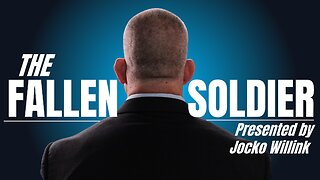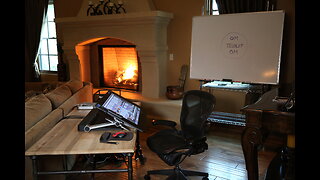The Constitution: The Supreme Court
The Supreme Court seems to have the final say over every controversial issue from abortion to gun control to same-sex marriage. But is that what the Framers of the Constitution intended? Sherif Girgis, Associate Professor of Law at the University of Notre Dame, has the answer.
SUBSCRIBE 👉 https://www.prageru.com/join
#constitution #supremecourt #prageru
Script:
Of the three branches of government—the legislative (the House of Representatives and the Senate), the Executive (the President), and the Judicial (the Supreme Court and the lower federal courts)—which is the most powerful?
Today, most people would probably say… the Judicial. It’s the Supreme Court that has the final say over every controversial issue. Prayer in school? Abortion? Same-sex marriage? “Let the Court decide” is the modern refrain.
But that’s a long way from how the Framers saw the role of the courts.
Let’s take a look at what the Constitution says.
Article III, Section 1 vests the nation’s “judicial power” in a Supreme Court and any lower courts that Congress may establish.
“The judges, both of the supreme and inferior courts, shall hold their offices during good behaviour, and shall… receive for their services, a compensation, which shall not be diminished[...].”
By “good behaviour” the Framers meant lifetime tenure. As long as federal judges didn’t do anything worthy of impeachment, they had the job for life or until they chose to give it up.
The purpose of lifetime tenure and salary was to place federal judges above politics, to make them independent of the legislative and executive branches. In this way, they would act as another check on the power of those two branches.
Yet for all that, Alexander Hamilton thought the judiciary was “beyond comparison the weakest of the three” branches.
Boy, was he wrong—but not in his assessment of the judicial branch as spelled out in the Constitution.
As Hamilton explained, the Executive bears the sword, or the power to coerce. Congress sets the rules and controls the purse—the federal budget. But what “weapon” did the judiciary have? Hamilton couldn’t see any.
He couldn’t see any because he and the other Framers never imagined that the Court would be the ultimate arbiter of what was “Constitutional” and what wasn’t. They saw the court as having a much more limited function—as we shall see.
The Constitution doesn’t even state how many justices there should be. That was set by the first Congress of 1789. They set the number of Justices at six which, to our modern sensibility, is bizarre. What would happen in the case of a tie vote?
Again, this points to the Framers’ modest conception of the Court.
As spelled out in Section 2 of Article III, federal courts have just one job: to settle disputes about the rights of the parties before them—not to use cases as platforms to resolve policy debates. For the Framers, setting policy was the job of the peoples’ elected representatives.
What about the ability to declare laws unconstitutional: didn’t that belong to the courts? Yes, but that didn’t make courts the only authority on the Constitution.
As understood by the framers, the legislative and executive branches have their own duty—and power—to interpret the Constitution when doing their jobs. For example, presidents have vetoed bills they considered unconstitutional. That’s what Andrew Jackson did when he refused to recharter the national bank in 1832. He didn’t think the Constitution gave Congress the authority to establish such an institution.
True, the President and Congress have usually followed the Court’s readings of the Constitution as a way of avoiding unnecessary conflict. But, there have been exceptions.
For the full script, visit: https://www.prageru.com/video/the-constitution-the-supreme-court
Most famously,
-
 5:58
5:58
PragerU
5 days agoThe Fallen Soldier | 5-Minute Videos
10.3K9 -
 1:36:46
1:36:46
Roseanne Barr
1 day ago $73.82 earnedFor Love of Country with Tulsi Gabbard | The Roseanne Barr Podcast #50
138K383 -
![[D2] Rumble Featured!! Lets Go!!! #RumbleTakeOver](https://hugh.cdn.rumble.cloud/s/fw/s8/1/5/g/l/6/5gl6r.0kob-small-D2-Onslaught-Grind-w-Some-P.jpg) 6:28:15
6:28:15
CHiLi XDD
9 hours ago[D2] Rumble Featured!! Lets Go!!! #RumbleTakeOver
28.5K7 -
 2:45
2:45
Chicks in the Office
8 hours agoHolly Madison Talks Reconciliation with Kendra Wilkinson
48.5K32 -
 LIVE
LIVE
Di bear
9 hours agoFinal Season Mission, Pantheon | Destiny 2
353 watching -
 6:54:43
6:54:43
SquallRush
12 hours agoAthenian Rhapsody!
49.4K7 -
 1:47:01
1:47:01
Real Coffee With Scott Adams
10 hours agoEpisode 2492 CWSA 06/01/24
60.2K52 -
 2:08:10
2:08:10
LFA TV
10 hours agoEP 47: Miles Guo Trial Special with Special Guests - Truth, Betrayal, and Fox Hunt | WHISTLE BLOWERS 6.01.24 12pm EST
52.4K15 -
 1:13:59
1:13:59
Tactical Advisor
9 hours agoVault Room Tour/Unboxing- Vault Room Live Stream
49.1K4 -
 1:11:28
1:11:28
The Squad
15 hours agoArsenal's Huge Summer🚨Olise to Man Utd DEAL✅ Osimhen to Arsenal or Chelsea☑️ UCL Final Preview
60.4K11